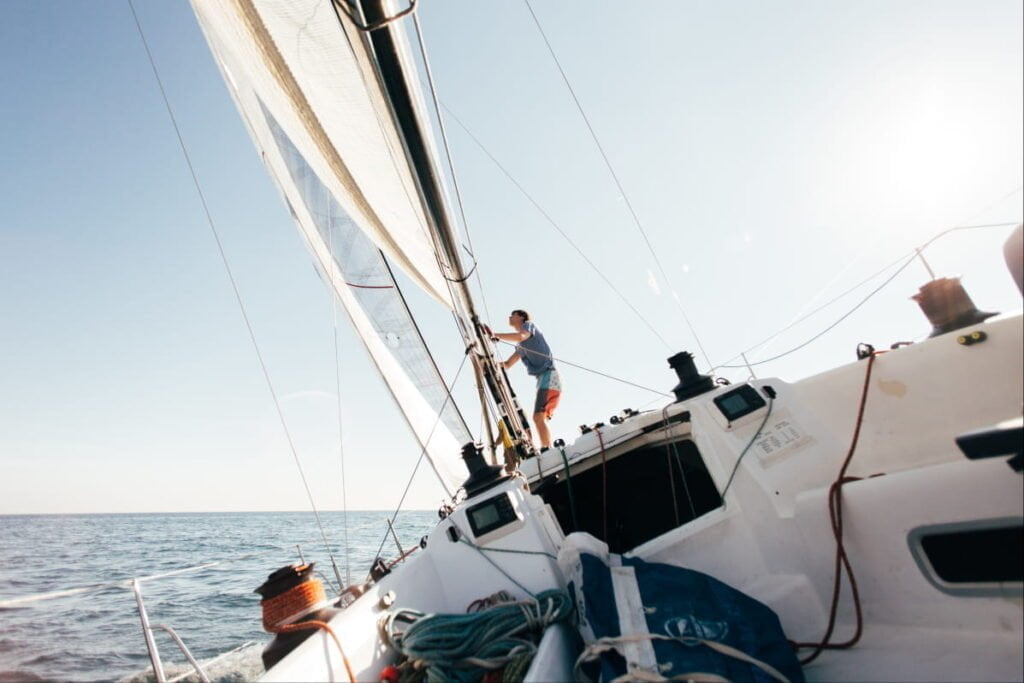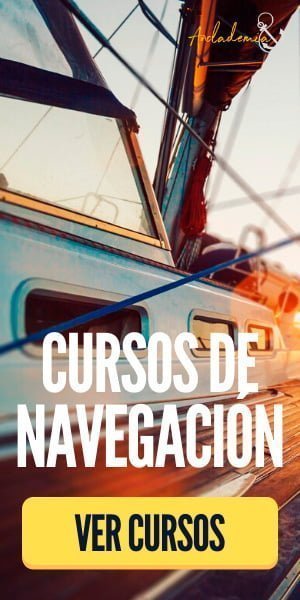If you are passionate about sailing and are considering doing the sailing qualification practices In order to be able to steer sailboats up to 24 meters in length, you should identify and name, at least, the fundamental parts of a sailing boat: In this post we tell you what they are called and where the most important ones are located.
Parts of the helmet
In any boat, the helmet It is the most important part of it, the glass that is in contact with water and which, in turn, contains all the other elements that make up the ship. The most important parts of the hull are:
Are you interested in: Types of Sailboats: Light, Sports, Old and Recreational
- Bow: front part of the hull. It is narrower than the rear and ends in a point, in order to break through the water and facilitate navigation.
- Stern: the rear of the boat. The rudder and, in the case of motor boats, the propellers that propel the boat are usually installed in the stern.
- Starboard: located at the stern and facing the bow, on the right side of the boat.
- Port: opposite starboard side, left side of the boat, looking from the stern towards the bow.
- Bulwarks: each of the two parts into which the bow is divided longitudinally, so that we have a port bow and a starboard bow.
- Side: Also called a beam, the sides result from dividing the hull in two by an imaginary longitudinal line. There is a port side and a starboard side.
- Fins: narrowness of the boat that begins before reaching the bow. Each ship has two, one on the starboard side and one on the port side.
- Deck: upper walkable part of the hull.
- Line of crujia: imaginary line that divides the hull of the boat into two parts longitudinally.

From the water
If we take into account the natural environment of the boat, the water, we can divide the ship into:
- Overhead work: corresponds to the part of the boat that remains out of the water.
- Living work: This is the name given to the part of a boat's hull that remains under water.
- waterline: line reached by the water level and which constitutes the division between freeboard and liveboard.
According to the wind
Wind is one of the most important forces during navigation, especially in the case of sailing boats. Depending on the direction in which the wind blows, we can distinguish between:
- Windward: side of the boat that receives the force of the wind.
- Leeward: side of the ship from which the wind blows away.

Parts of candles
In addition to the parts common to all boats, due to their own physiognomy, sailboats can be divided into certain specific parts:
- Halyard: This is the name given to the rope used to hoist the sails of a boat.
- Halyard Fist: or the top of the sail, is the upper end of a sail and is used to secure the halyard.
- Tack fist: In a triangular sail, it is the lower vertex closest to the bows of the boat. In the case of the mainsail, it is fixed to the lower part of the mast.
- Clew: is the point of the sail opposite the tack point, the one closest to the stern. The clew point of the mainsail is fixed to the boom.
- Luffail: part of the sail that runs parallel to the mast, from the halyard head to the tack head.
- Pujamen: lower part of the sail, from the clew to the tack.
- Baluma: the part of the sail that runs between the clew and the halyard. When it comes to trimming sails, the leech is the most important part.
- Vane: arrow located at the top of the mast that serves to indicate the direction of the wind.
- Mast: vertical piece to which the sails of the boat are attached and which transmits the force of the wind to the hull, through them. It is usually made of aluminum or carbon.
- Boom: piece used to shape the main sail of a boat. It is attached to the mast perpendicular to it.
- Against: used to control the rise of the boom on open courses, placed between it and the mast, thus increasing the efficiency of the mainsail.
- Standing rigging: set of cables and rods used to hold the masts together, consisting of a bow stay, shrouds and a black stay.
- Bow stay: part of the standing rigging responsible for holding the mast fore and aft.
- Jib or genoa: foresail. It is known as a jib if it is small and stays in front of the mast, while it is called a genoa if it is larger and overlaps, that is, it stays behind the mast.
- Jib/genoa sheets: ropes used to regulate the tension of the sail, as well as its direction and opening.
- Mainsail: the rear sail of the boat. If there is only one mast, it is attached to the boom and the mast.
- Mainsheet: like the jib and genoa sheets, they are used to regulate the tension and opening of the sail, although in this case they are secured to the boom.
- Orza: long, heavy extension of the keel, which serves to provide the boat with greater stability, reducing draft.
- Rudder: articulated piece used to steer the boat.
- Cane: lever that, attached to the rudder, is used to improve the maneuverability of the boat.




